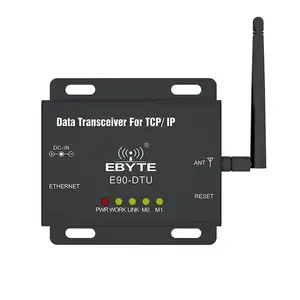
433MHz-100W Rs485 Communication Anti Drone Interference Module Wireless RF Module Drone Jammer Modul


Qsfp Transceiver Fiber Optic Equipment QSFP-40/100-SRBD 100G And 40GBASE SR-BiDi LC 100m OM4 MMF QSFP Transceiver























The 433MHz RF transceiver category encompasses a broad array of wireless communication modules that operate on the 433MHz frequency. These devices are integral components in establishing radio frequency communication for various applications. Typically, a 433MHz RF module includes both a transmitter and receiver, allowing for bidirectional communication, which is essential for systems requiring remote telemetry, data exchange, or control.
There are several types of 433MHz wireless modules, each designed to meet specific needs within the industry. Some are simple RF receivers and transmitters, while others are more complex transceiver modules capable of both actions. The applications of these modules are diverse, ranging from home automation systems to industrial remote control and telemetry. They are commonly found in remote keyless entry systems, wireless alarm systems, and various IoT devices that require low-power and long-range capabilities.
A 433MHz RF transceiver module is often praised for its compact design and low power consumption, making it suitable for battery-operated applications. The materials used in manufacturing these modules include a combination of semiconductors, PCBs, and durable casing to protect the internal circuitry from environmental factors. The design of these modules also takes into account the need for stable performance, which is why they often include features such as frequency stabilization and noise reduction technologies.
The advantages of using a 433MHz remote control transceiver are numerous. The frequency itself is part of the ISM band, which is reserved for industrial, scientific, and medical uses, and is less crowded than other frequencies, leading to less interference. These modules are also known for their long-range capabilities, which can be optimized with the correct antenna design. Additionally, the simplicity of the circuitry involved in 433MHz RF communication allows for easier integration into existing systems and can be a cost-effective solution for wireless communication needs.
Selecting the appropriate 433MHz RF transceiver for a specific application involves considering factors such as range, data rate, and power requirements. It is crucial to match the module's specifications with the intended use to ensure reliable performance. For instance, a simple RF transmitter and receiver pair might suffice for basic remote control tasks, whereas a full transceiver with advanced encoding and decoding capabilities would be better suited for complex data transmission scenarios.
Integrating a 433MHz transceiver into a product or system requires attention to compatibility with other electronic components. The transceiver must be able to interface with the microcontroller or processor in charge, and considerations regarding the antenna design for optimal range and performance are also paramount. It is essential to ensure that the chosen module can communicate effectively within the intended environment and application.